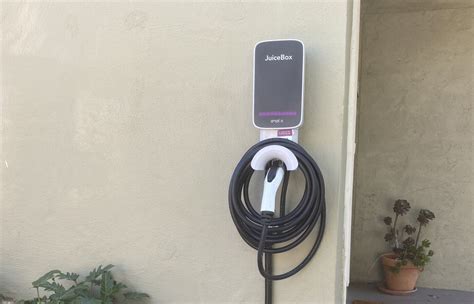Charge Up Your Savings: Understanding Home EV Charger Rebates
As electric vehicles (EVs) gain popularity, more homeowners are opting to install home EV chargers to enhance accessibility and convenience. However, the initial cost of purchasing and installing these chargers can be a significant hurdle. Fortunately, various home EV charger rebates are available to help offset these costs, making it easier for individuals to transition to electric vehicles. In this article, we’ll explore the different types of rebates, how to apply for them, and what you need to know to take advantage of these savings.
Why Install a Home EV Charger?
Owning an electric vehicle is more than just making a statement about sustainability. It can lead to significant savings on fuel costs and maintenance compared to traditional gas-powered vehicles. However, to fully enjoy the benefits of driving an EV, having a home charging station is crucial. A home EV charger allows for:
- Convenient overnight charging
- Control over charging schedules to take advantage of lower electricity rates
- Increased resale value of the property
- Access to faster charging compared to standard wall outlets
Types of Home EV Charger Rebates
Home EV charger rebates can come from various sources, including federal, state, and local governments, as well as utility companies. The main types of rebates include:
1. Federal Tax Credit
The federal government offers a tax credit for EV chargers installed at home. Under the current program, homeowners can receive a credit of up to 30% of the total installation costs, including the charger and any associated equipment. The maximum allowable credit is capped at $1,000 for residential installations.
2. State Incentives
Many states have their own rebate programs for home EV chargers. The amount and eligibility requirements vary by state. Some states offer direct cash rebates that can significantly lower the out-of-pocket costs, while others apply tax credits similar to the federal program.
3. Utility Company Rebates
Utility companies often provide incentives to encourage the use of EVs and may offer rebates for home charger installations. These programs can include cash rebates, reduced electricity rates during off-peak hours, or even free installation of charging equipment in some cases.
How to Apply for EV Charger Rebates
Applying for home EV charger rebates typically involves several steps. Here’s a general guide on how to navigate the system:
- Research Available Rebates: Start by checking the federal, state, and local programs available in your area. Websites like the Database of State Incentives for Renewables & Efficiency (DSIRE) can be a good starting point.
- Choose the Right Charger: Select a charger that meets your needs and is eligible for rebates. Ensure it complies with any technical specifications required by rebate programs.
- Complete Required Paperwork: Gather all necessary documents, including proof of purchase, installation invoices, and any application forms required by the rebate program.
- Submit Your Application: Ensure your application is filled out correctly and submitted before any deadlines. Keep copies of all documents submitted.
- Follow Up: After submission, follow up to ensure your application is being processed. Be prepared to provide additional documentation if required.
Tips for Maximizing Your Savings
To maximize the savings from home EV charger rebates, consider these tips:
- Consult with a professional installer to ensure your charger meets local codes and regulations.
- Stay informed about changes in rebate programs, as they can often change from year to year.
- Make sure to keep track of all related expenses; some expenses can also qualify for rebates outside of just the charger itself.
- Consider joining local EV owner groups for tips and resources specific to your area.
Conclusion
Investing in a home EV charger represents not just a commitment to sustainable transportation but also a smart financial decision. With numerous rebate opportunities available, homeowners can significantly reduce the upfront costs associated with installing charging stations. By understanding the various types of rebates, how to apply for them, and tips on maximizing savings, potential EV owners can make informed decisions that benefit both their wallets and the environment.
FAQs
1. How much can I expect to pay for a home EV charger installation?
The cost can vary widely based on the charger model and installation complexity. Generally, expect total costs to range from $500 to $2,500, including equipment and installation.
2. Are there income limitations for receiving rebates?
Many rebate programs do not impose income limitations; however, some state programs may prioritize low to moderate-income households. Always verify specific eligibility criteria.
3. Do I need a special electrical panel for a home EV charger?
Depending on the charger’s power requirements, you may need to upgrade your electrical panel. Consultation with a licensed electrician is recommended.
4. How long does it take to receive rebate funds after applying?
Processing times can vary significantly based on the program. Typically, it can take anywhere from a few weeks to several months to receive rebates.
5. Can I receive multiple rebates for the same installation?
In some cases, it’s possible to stack rebates from different sources (federal, state, and local). Just ensure you meet all eligibility requirements for each program.
Download Home Ev Charger Rebate
